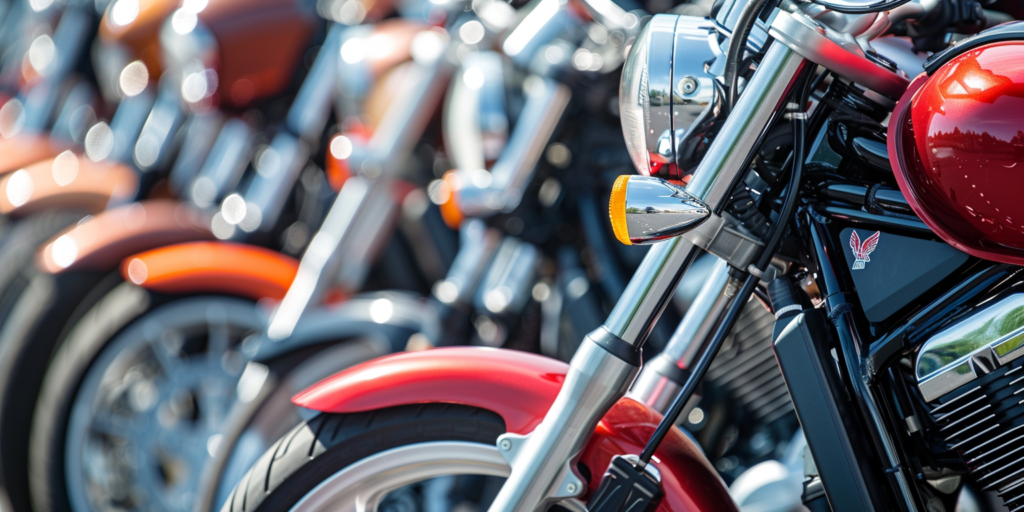Riding a motorcycle is exhilarating and freeing, but it also comes with a heightened level of risk compared to driving a car. With less protection and stability, motorcycles require careful maintenance and preparation to ensure rider safety. As encouraged by motorcycle accident lawyers in Cherry Hill, embarking on any journey, whether it’s a short commute or an extended road trip, it’s essential to perform a series of checks to ensure that your motorcycle is in optimal condition. Here’s a comprehensive guide on what to check on your motorcycle before going for a ride.
Tires:
Tire Pressure: Check the tire pressure using a reliable pressure gauge and ensure that it matches the manufacturer’s recommendations. Underinflated tires can affect handling and stability, while overinflated tires can lead to reduced traction and uneven wear.
Tread Depth: Inspect the tread depth to ensure that it meets safety requirements, still has deep ridges, and can still be effective when in adverse weather conditions. Replace tires that show signs of excessive wear or damage.
Tire Condition: Look for any cuts, bulges, or punctures on the tire sidewalls and tread surface. These defects can compromise tire integrity and increase the risk of blowouts or loss of control while riding.
Brakes:
Brake Fluid Level: Check the brake fluid reservoir levels and top up if necessary. Low brake fluid levels can mean signs of a deteriorating brake pad, both of which require immediate attention.
Brake Pads: Check the brake pads for wear by visually checking the thickness of the pads. Replace worn brake pads to ensure optimal braking performance and avoid potential brake failure.
Brake Lever and Pedal: Test the brake lever and pedal for smooth operation and firm resistance. Any sponginess or excessive play may indicate air in the brake lines or worn components that need adjustment or replacement.
Lights and Electrics:
Headlights and Taillights: Turn on the headlights, taillights, and indicators to ensure they are functioning correctly. Replace any blown bulbs or faulty wiring to maintain visibility to other road users.
Horn: Test the horn to ensure it emits a loud and audible sound. The horn is a vital safety feature that alerts other motorists of your presence in potentially hazardous situations.
Battery: Check the battery terminals for corrosion and secure connections. Inspect the battery voltage using a multimeter to ensure it is within the recommended range for starting the motorcycle reliably.
Fluids:
Engine Oil: Verify the engine oil level using the dipstick or sight glass and top up if necessary. Low oil levels can lead to increased engine wear and potential mechanical failure.
Coolant: Check the coolant level in the radiator or overflow reservoir and ensure it is at the recommended level. Overheating can cause engine damage and compromise performance, especially during extended rides in hot weather.
Fuel: Ensure an adequate fuel level for your intended journey and top up if necessary. Running out of fuel on the road can leave you stranded and vulnerable to accidents or breakdowns.
Controls and Cables:
Throttle: Check the throttle for smooth operation and responsiveness. Lubricate the throttle cables if they feel sticky or sluggish to ensure precise control over engine speed.
Clutch and Gearshift: Test the clutch lever and gearshift pedal for smooth engagement and accurate shifting. Adjust the clutch cable tension if necessary to achieve the desired feel and responsiveness.
Handlebars and Mirrors: Inspect the handlebars for tightness and alignment, ensuring that they are secure and comfortable to grip. Adjust the mirrors to provide a clear view of the road behind you and minimize blind spots.
General Inspection:
Frame and Suspension: Visually inspect the frame, forks, and suspension components for signs of damage or wear. Any cracks, bends, or leaks should be addressed promptly to maintain structural integrity and ride quality.
Chain and Sprockets: Check the chain tension and lubrication to prevent excessive wear and ensure smooth power transmission. Replace worn sprockets or a stretched chain to avoid drivetrain issues and potential accidents.
Exhaust System: Inspect the exhaust pipes and muffler for leaks, corrosion, or damage. Any abnormal noise or emissions should be investigated and repaired to maintain compliance with environmental regulations and minimize noise pollution.
By performing these essential checks before every ride, you can help ensure your safety and enjoyment on the road while minimizing the risk of accidents or mechanical breakdowns. Remember that regular maintenance and attention to detail are key to keeping your motorcycle in top condition and maximizing its longevity. Safe travels!



